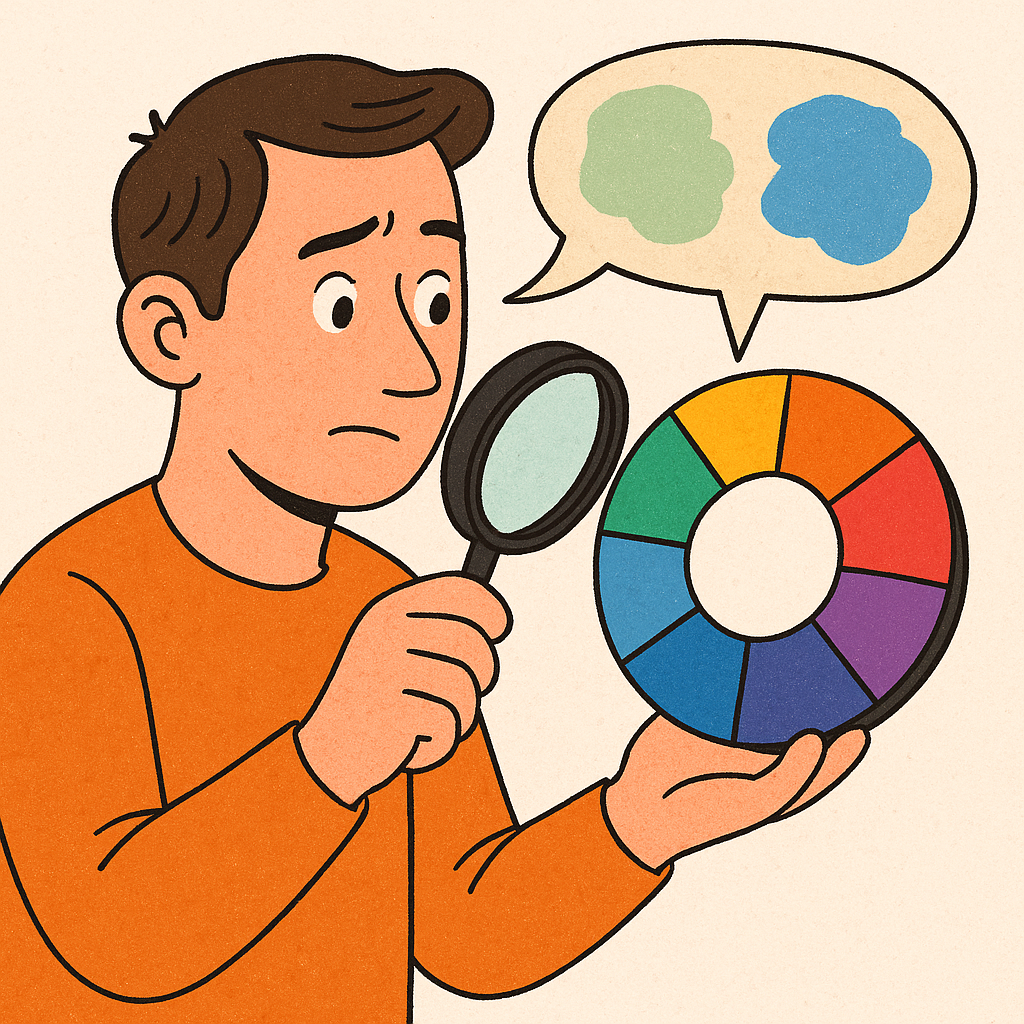Have you ever wondered whether people in other cultures perceive colors the same way you do? Interestingly, science suggests that the language you speak can shape how you see and categorize colors. This phenomenon, known as linguistic relativity, challenges the idea that perception is purely biological and universal.

The Basics of Color Perception
Color perception begins with biology: humans have three types of cone cells in their eyes, sensitive to red, green, and blue wavelengths. From this, we perceive a broad spectrum of colors. However, while the biology of vision is universal, the categorization of colors—how we name and distinguish them—is heavily influenced by language and culture.
For example, in English, we distinguish between “blue” and “green” as separate colors. But is this division as clear in all languages? Not necessarily.
The Case of “Blue” and “Green”: Not Always Different
One of the most famous examples of linguistic variation in color perception comes from languages that do not differentiate between blue and green.
The Russian vs. English Blue
In Russian, there are two distinct basic words for what English speakers call “blue”:
“Goluboy” for light blue.
“Siniy” for dark blue.
Research by Paul Kay and Brent Berlin (1969), pioneers in the study of color terminology, showed that different cultures divide the color spectrum differently. Further studies, such as those by Winawer et al. (2007), revealed that Russian speakers are faster at distinguishing between shades of blue compared to English speakers, who categorize both shades simply as “blue”.
This suggests that having distinct words for colors can enhance perceptual discrimination between them.
The Himba People of Namibia
Another striking case is the Himba people of Namibia, who speak the Otjihimba language. Their language has several unique color categories but no separate word for “blue” as distinct from “green”. A study by Jules Davidoff et al. (1999) found that the Himba are less likely to distinguish between blue and green hues compared to English speakers.
Interestingly, the Himba have multiple words for different shades of green, and are more sensitive to those distinctions than English speakers. This reinforces the idea that linguistic categories influence perceptual sensitivity.
Linguistic Relativity: The Sapir-Whorf Hypothesis
These findings relate to the Sapir-Whorf Hypothesis, which posits that the structure of a language affects its speakers’ worldview and cognition. While the strong version—that language determines thought—has been largely dismissed, the weaker version—that language influences certain types of cognitive processes—is widely accepted.
Color perception is one of the most robust domains supporting this theory.
Color Naming Across Cultures
In their groundbreaking 1969 study, Brent Berlin and Paul Kay proposed that there are universal patterns in how languages develop color terms. They suggested that languages tend to develop color words in a predictable sequence:
Black and white (or dark and light).
Red.
Green or yellow.
Blue.
Brown.
Other colors like pink, purple, orange, and gray.
However, not all languages follow this progression completely. Some small language communities may have as few as two or three basic color terms, while others, like English, have over a dozen.
How Many Basic Color Terms Does a Language Need?
The number of basic color terms in a language can vary widely. Some languages, such as Bassa in Liberia, only have two basic color categories: one for warm colors (like red and yellow) and one for cool colors (like blue and green).
Other languages, like Japanese, traditionally had a single word for both blue and green—“ao”—but over time developed a separate word, “midori”, for green.
This evolution illustrates how languages can change their color categorizations over time due to cultural, technological, or environmental factors.
Does Language Shape How We See or Just How We Talk?
A common question in this debate is whether language actually changes our perception or simply our description of colors. Recent research using neuroimaging and reaction time experiments suggests that language can influence perception at very early stages of visual processing.
For example, a study by Thierry et al. (2009) measured brain activity in Greek and English speakers. Greek has distinct words for light blue (“ghalazio”) and dark blue (“ble”), while English does not. The study found that Greek speakers showed different brain responses to light and dark blue even when not explicitly asked to categorize the colors.
This indicates that linguistic categories can affect automatic perceptual processes, not just conscious descriptions.
The Role of Culture and Environment
While language influences color perception, cultural and environmental factors also play a role.
People in tropical environments often develop more nuanced distinctions for shades of green due to the abundance of vegetation.
Cultures with limited exposure to artificial dyes or digital media may not develop distinct terms for colors that are not salient in their environment.
This interplay between environment, culture, and language demonstrates that color perception is a complex cognitive process, not solely dictated by biological factors.

Implications Beyond Color
The relationship between language and perception extends beyond color. Studies have shown that linguistic categories can influence spatial reasoning, temporal cognition, and even emotional recognition.
For instance, some Aboriginal languages in Australia use absolute directions (north, south, east, west) instead of relative terms like “left” and “right”, leading speakers to develop heightened navigational abilities.
Similarly, color perception research exemplifies how language shapes the lens through which we interpret the world.
Why This Matters
Understanding how language shapes perception is important for several reasons:
Cross-cultural communication: Being aware of different perceptual categories can improve international relations, education, and commerce.
Cognitive science: It reveals how flexible and adaptive human cognition is.
Artificial intelligence: Insights into human perception and categorization can inform the development of more nuanced machine vision systems.
Moreover, appreciating this diversity in perception can foster greater empathy and cultural understanding.
Conclusion: Do We All See the Same Colors?
The answer is both yes and no. Biologically, humans are equipped with the same visual system, but language and culture shape how we divide and categorize the spectrum of color.
From the Himba’s nuanced greens to Russian’s distinct blues, and English’s evolving palette, it’s clear that how we “see” colors is deeply intertwined with how we talk about them.
Next time you admire the blue of the sky or the green of the forest, remember that your perception of those colors is filtered not just through your eyes, but also through the language you speak.
